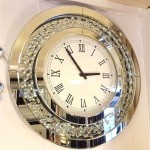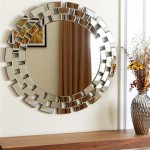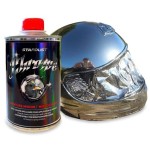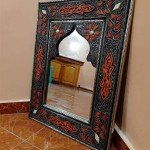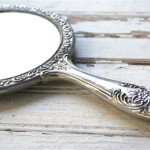Heavy Mirror Hanging: A Comprehensive Guide
Hanging a heavy mirror requires more than just a simple nail and hammer. Proper installation necessitates careful planning, specialized hardware, and a thorough understanding of wall construction to ensure both safety and stability. This guide offers a detailed approach to hanging heavy mirrors, covering key considerations from choosing the right hanging hardware to reinforcing the wall.
Assessing the Mirror's Weight and Dimensions
Before purchasing any hardware, accurate measurements are crucial. Knowing the mirror's exact weight and dimensions forms the basis for selecting appropriate hanging hardware. Use a bathroom scale for weight, and a tape measure for height and width. These measurements guide hardware choices and wall anchoring strategies.
Understanding Wall Construction
Different wall types require different anchoring methods. Drywall, plaster, concrete, and brick each have varying load-bearing capacities and necessitate specific hardware. Identifying wall type is a critical step before proceeding with installation.
Choosing the Right Hanging Hardware
Selecting appropriate hanging hardware is paramount for safety and stability. The choice depends on the mirror's weight and the wall type. Several options are available:
*D-Rings and Wire: Suitable for lighter mirrors hung on drywall, this method involves attaching D-rings to the back of the mirror and suspending it from a wire attached to picture hooks or wall anchors.
*Heavy-Duty Mirror Hangers: Designed specifically for heavier mirrors, these hangers typically use a J-shaped hook system that interlocks with a wall-mounted bracket. They offer greater weight capacity and stability than D-rings and wire.
*French Cleats: These consist of two interlocking pieces of wood, one attached to the wall and the other to the back of the mirror. They provide a strong and stable hanging solution for very heavy mirrors.
*Mirror Mounting Clips: These clips grip the sides of the mirror and are attached to the wall. They are a good choice for frameless mirrors and offer a clean, minimalist look.
Locating Wall Studs
Whenever possible, hanging heavy mirrors directly on wall studs provides the most secure anchoring. Use a stud finder to locate the studs behind the drywall. Mark the stud locations for reference during installation.
Using Wall Anchors
When hanging on drywall where studs aren't available, wall anchors are essential for distributing the weight and preventing the mirror from pulling out. Different types of wall anchors cater to varying weight capacities:
*Plastic Expansion Anchors: Suitable for lighter loads, these anchors expand within the drywall when a screw is inserted, creating a secure grip.
*Toggle Bolts: Ideal for heavier mirrors, toggle bolts use spring-loaded wings that expand behind the drywall, providing a strong hold.
*Molly Bolts: Another heavy-duty option, molly bolts feature a sleeve that collapses against the back of the drywall, creating a wide bearing surface.
Reinforcing the Wall
For exceptionally heavy mirrors, reinforcing the wall behind the drywall may be necessary. This often involves adding a piece of plywood between the drywall and the studs, creating a stronger anchoring surface. This is particularly important for older homes or walls with deteriorated drywall.
Installing the Hanging Hardware
Follow the manufacturer's instructions carefully when installing the chosen hanging hardware. Ensure all screws are tightly fastened and the hardware is level. Precise installation is critical for stability and prevents the mirror from tilting or falling.
Ensuring Level Placement
Once the hardware is installed, use a level to ensure the mirror hangs straight. Adjust the hanging hardware as needed until the mirror is perfectly level. Accurate leveling is essential for both aesthetics and stability.
Safety Precautions
Safety should be a top priority when hanging heavy mirrors. Employing the following safety measures minimizes risks:
*Use appropriate personal protective equipment (PPE): Wear safety glasses to protect eyes from debris and gloves to protect hands.
*Enlist a helper: Lifting and positioning heavy mirrors is easier and safer with assistance.
*Work in a well-lit area: Adequate lighting improves visibility and reduces the risk of accidents.
*Inspect the wall for electrical wiring or plumbing: Use a stud finder with wire detection capabilities before drilling into the wall to avoid damage.
Final Checks and Adjustments
After the mirror is hung, double-check the stability by gently applying pressure to different areas. Ensure the mirror is securely fastened and does not wobble or shift. Make any necessary adjustments to the hanging hardware if required.

How To Hang A Large Or Heavy Mirror

Heavy Picture Mirror Hanging Kit 50 Kg

How To Hang A Heavy Mirror C R F T

How To Hang A Very Heavy Picture Or Mirror The Best

A Better Way To Hang Heavy Mirror Hanging Pictures
How To Hang A 100 Pound Mirror On Drywall Quora

How To Hang A Heavy Mirror Or Picture True Value

How To Hang A Heavy Mirror

How To Hang A Heavy Mirror With Pictures Wikihow

Picture Wire Strung Between Two D Rings Attached To The Back Of A Frame Hanging Mirror Heavy


